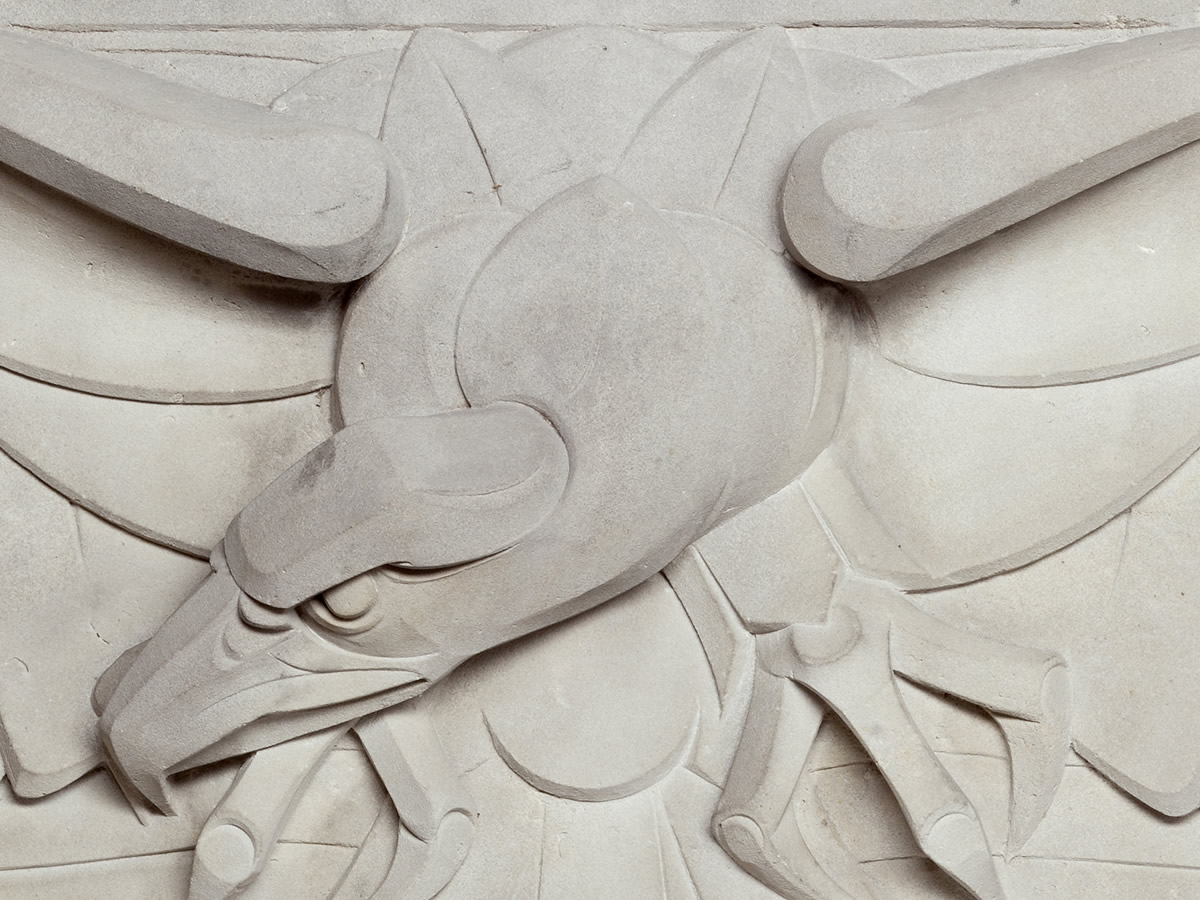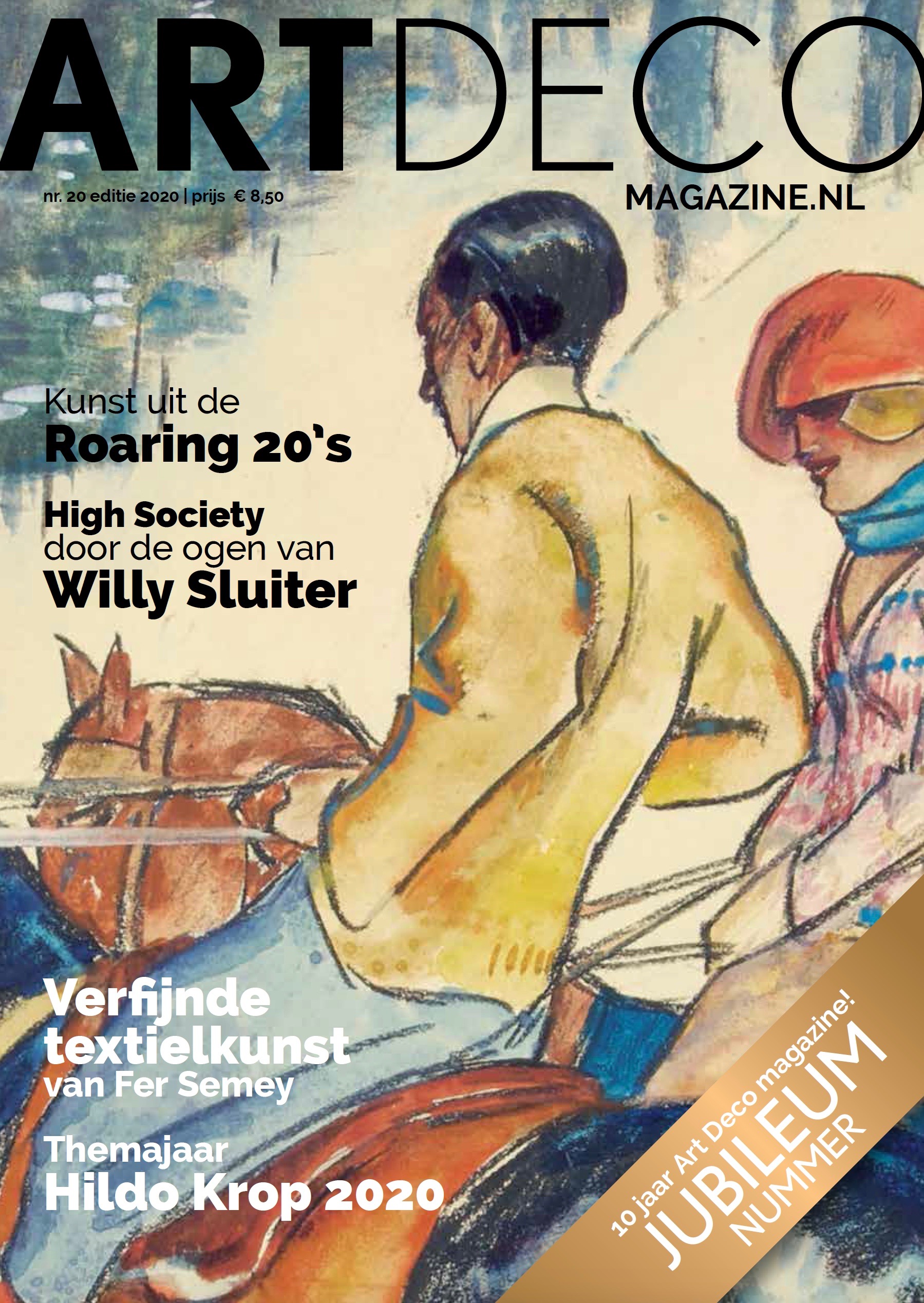The Eagle That Sailed Around the World
When sculptor Jan Altorf cut his powerfully shaped eagle from limewood, he was fully aware this was going to be the crown of a newel in the villa of the Dutch industrialist Cornelis Bruynzeel sr. What he didn’t know was that this eagle would serve as a mascot half a century later at the wheelhouse of the Stormvogel (in English: Thunderbird). With this legendary speedy ocean racer, Bruynzeel’s heir and son won many ocean races.
Industrialist Cornelis Bruynzeel’s villa
Around 1915, Cornelis Bruynzeel sr. (1875–1956), owner of the woodworking factory De Arend (The Eagle) in Rotterdam, ordered the construction of a villa in the tree-lined village of Voorburg, located close to The Hague. He called the house De Arendshoeve (The Eaglestead). Bruynzeel sr. surrounded himself with art. He commissioned painter Vilmos Huszár — one of the founders of the De Stijl (Dutch for the Style) movement— to design a great stained glass window for the villa. Johan Coenraad ‘Jan’ Altorf (1876–1955) not only sculptured the newel for De Arendshoeve, but also the large gable stone, which decorated the entrance area. A mighty eagle with wings widespread and vicious claws adorned the facade of the villa.
Flat Ornament by Jan Altorf
Jan Altorf created his first gable ornaments around 1900 for the art dealer Arts and Crafts in The Hague. In 1901, a gable stone followed for villa De Zeemeeuw (The Seagull) in Scheveningen, which was designed by the famous Art Nouveau architect Henry van de Velde. He also provided a crib and a dining room screen, designed for the villa by Johan Thorn Prikker, with richly decorated carvings. Later, the flat ornament of the embossed decorations would regularly return in his sculptures.
Animal figures often form the motif in the sculptures and furniture of Altorf. In this way, in 1906, he designed a construction sculpture of a pelican for the Levensverzekeringsgebouw (Life Insurance Building) in Maastricht. Chairs with snails at the corners of the backrest and a table fitted with bees and insects in relief form part of the collection of the Rijksmuseum in Amsterdam.
First Dutch Animaliers
The wooden eagle in De Arendshoeve was not the only newel decoration that he made: art collector and patron Helene Kröller-Müller was a great admirer of Altorf’s work. In Jachthuis Sint Hubertus, her country residence on estate Hoge Veluwe, a granite eagle owl, which was sculpted by Altorf in 1917, rests on the newel. Several years later, he designed a bronze owl and a bronze hawk, which stand at the library of the country residence.
Together with his contemporaries Joseph Mendes da Costa, John Rädecker and Hildo Krop, Altorf belonged to the first batch of so-called animaliers in the Netherlands. He drew inspiration from exotic animals in the Artis Zoo in Amsterdam. Sculptures from monkeys, birds and elephants, amongst others, were realised in different types of materials.
The Essence of the Animal
The abstract form of the wooden eagle is characteristic of Altorf’s style. The animal seems to be built from plastic geometric planes. By reducing the elements to an abstract form, Altorf attempted to achieve the essence of the animal. The influences of symbolism and theosophy are clearly visible.
It is notable that certain characteristics of the animal have been enlarged or reduced in size in relation to the actual proportions. For example, the claws of the eagle are emphasised. The plumage resembles the aforementioned flat ornament. Altorf used an angular and closed idiom and represented the character of an animal as though it experienced a moment of peace and contemplation.
Silver Medal in Turin
Altorf also rendered animals in ivory, including several owls and a chameleon. Ivory was a very difficult material to work with due to its hardness. Here, the deepest concentration was required. Objects of ivory often showed the artisanal and superior qualities of the sculptor. On the first international exhibition of modern decorative art in 1902 (L'Esposizione Internazionale d'Arte Decorativa Moderna) in Turin, Altorf received a silver medal for several of his ivory statuettes.
Between 1911 and 1912, Altorf briefly collaborated with ceramicist Chris Lanooy. Altorf designed several animal plastics, and Lanooy finished them in his oven. Famous are his parrot and elephant in white-glazed porcelain, amongst others. Experimental works include, for example, an earthenware bison decorated with brown glaze. In the abstracted form and enlarged head, Altorf’s touch can easily be recognised.
The Bruynzeel Family and their Eagles
Back to the eagles that Altorf created for De Arendshoeve. The house is still where it has always been, however, the eagles travelled along with the Bruynzeel family. In the course of the 20th century, the Bruynzeel firm developed into a huge manufacturer of doors, parquet floors, pencils and kitchens, of which the wings spread to other continents. After the woodworking factory De Arend had burnt down in 1919, Cornelis Bruynzeel sr. not only rebuilt part of the factory in Rotterdam but also commissioned a new door factory in Zaandam. That was the start of the great expansion. His oldest son, Cornelis (1900–1980), who wasn’t the type of man to call himself junior and liked to call himself CB, decided, when his parents passed away, that the eagles would not be left in De Arendshoeve but would stay with the Bruynzeel family. Around 1950, the gable stone moved to De Arendshoek (The Eagle’s Corner) — the modern house Cornelis Bruynzeel (CB) had commissioned to be built in Zaandam five years earlier. The eagle was placed there, fitted into a fence, where it stood weathering many storms until the late-1980s.
Mascot on a Legendary Ocean Racer
The wooden eagle experienced a more exciting future: it moved from the stairway of the Eaglestead to Cornelis’s 34-metre yacht, the Stormvogel, that he had commissioned around 1960. Since the 1930s, when he sailed his ocean racer De Zeearend (The Sea Eagle), Cornelis Bruynzeel had been a successful yachtsman: The Stormvogel was one of the first lightweight ocean racers, which led Cornelis to have legendary successes all over the world. The eagle landed as a mascot on the pole atop the stairs to the wheelhouse.
When De Stormvogel and Arendshoek were sold, both sculptures were saved again and remained in possession of the family. Today, however, one century after Altorf made them in commission to Cornelis Bruynzeel sr. the eagles are able to fly freely, heading for a new future and a new owner.
Are you interested in purchasing one of the eagles? Please contact Kunstconsult.
Text: Belinda Visser and Marleen Windhorst
Images: Dennis A-Tjak
© Kunstconsult – 20th century art | objects
Reproduction and distribution of this text is only allowed with correct reference.



